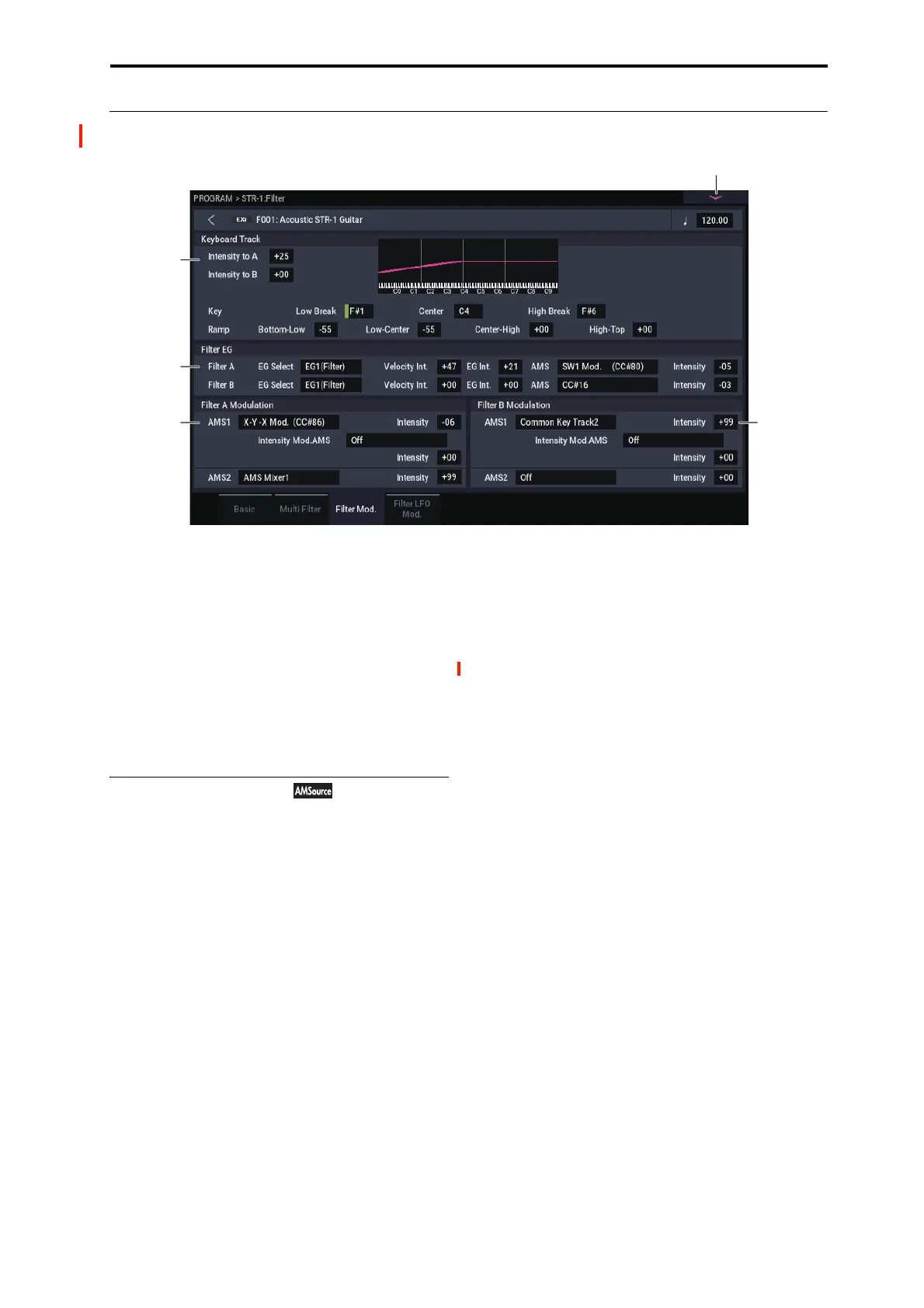PROGRAM > STR-1: Filter 5–3: Filter Mod.
239
5–3: Filter Mod.
This page contains all of the settings for Filter Frequency
modulation (except for the LFOs, which are on their own
page). Among other things, you can:
• Set up complex keyboard tracking shapes, and control
how the tracking affects filter cutoff.
• Control the effect of the Filter Envelope on filter cutoff.
• Assign AMS modulation for filter cutoff.
Filter B is available when the Filter Routing is set to Serial
or Parallel. Otherwise, the parameters for Filter B will be
grayed out.
5–3a: Keyboard Track
Most acoustic instruments get brighter as you play higher
pitches. At its most basic, keyboard tracking re-creates this
effect by increasing the cutoff frequency of a lowpass filter
as you play higher on the keyboard. Usually, some amount
of key tracking is necessary in order to make the timbre
consistent across the entire range.
The NAUTILUS keyboard tracking can also be much more
complex, since it allows you to create different rates of
change over up to four different parts of the keyboard.
The STR-1’s Filter keyboard tracking parameters are
identical to the HD-1’s. For more detailed explanations of
the parameters, please see “3–2a: Keyboard Track,” on
page 65.
There is one difference between the two, however: the STR-
1’s Filter tracking is affected by Portamento, so that it
changes smoothly during glides.
Intensity to A [–99…+99]
This controls how much the keyboard tracking will affect
Filter A ‘s cutoff frequency. The overall effect of the
Keyboard Track is a combination of this Intensity value and
the overall Keyboard Track shape.
Intensity to B [–99…+99]
This controls how much the keyboard tracking will affect
Filter B ‘s cutoff frequency.
Intensity to B applies only when the Filter Routing is set to
Serial or Parallel, and when Link is Off. In Single and
24dB (4-Pole) modes, or if Link is On, this parameter is
grayed out.
Key
Low Break [C–1…G9]
This sets the breakpoint note between the two lower ramps.
Center [C–1…G9]
This sets the center of the keyboard tracking. At this key, the
keyboard tracking has no effect on the filter frequency, or on
any AMS destinations.
High Break [C–1…G9]
This sets the breakpoint note between the two higher ramps.
Ramp
The effect on the filter cutoff is a combination of the ramp
values, as set below, and the Intensity to A and B parameters.
When Intensity is set to +99, a ramp of 50 changes the filter
frequency by 1 octave for every octave of the keyboard, and
a ramp of +99 changes the frequency by 2 octaves for every
octave of the keyboard.
+Inf and –Inf are special settings which create abrupt
changes for split-like effects. When a ramp is set to +Inf or –
Inf, the keyboard tracking will go to its extreme highest or
lowest value over the span of a single key.
For more detailed explanations, please see “3–2a: Keyboard
Track,” on page 65

